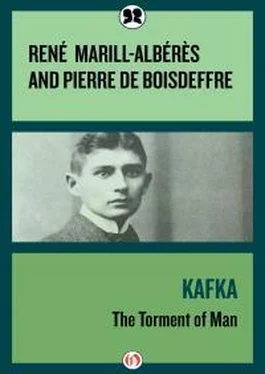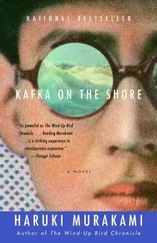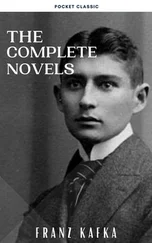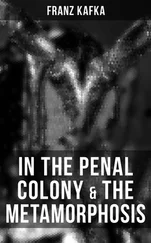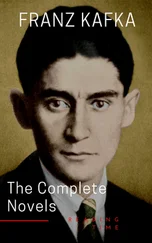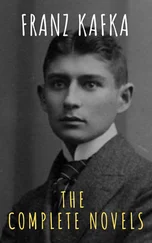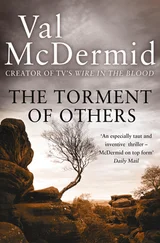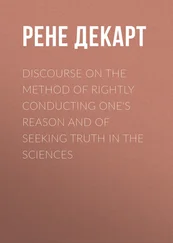Kafka was not responsible for passage from one era to the other, and it was not his influence that was felt. But he “chanced” to be there to express mysteriously this optical conversion, just as it was on the point of becoming a general phenomenon independent of him.
His success was certain but slow. His work, posthumous for the most part, corresponded exactly to the evolution of literary sensibility, but the public had to become conscious of this evolution before consecrating him as their witness, catalyst, or symbol. The great allegories were not published in Germany until 1925 and 1926, a year or two after the writer’s death. In 1925 the Revista de Occidente introduced “The Metamorphosis.” In 1928 a few partial translations were published in Italy and France ( Il Convengo, La Nouvelle Revue Française). The Castle appeared in England and the United States in 1930; The Trial was translated into French, Italian, and Norwegian in 1933. In 1938 the three or four great works were diffused: “The Metamorphosis,” and Amerika , for example, reached Argentina, thanks to Guillermo de Torre. Kafka’s revelation was still limited, however, to small groups. Not until after the war was Kafka universally translated, known, discussed, and transformed into a literary myth. In 1945 the weekly newspaper Action indicted him under the caption “Must Kafka Be Burned?” The writer charged that Kafka seems to represent a metaphysical anguish which contributes nothing toward the construction of a new, logical world.
Then it was discovered throughout the world that Kafka had been the herald of the “absurd sensibility” which was asserting itself fifteen or twenty years after his death. Written in 1914, “In the Penal Colony” anticipates the deportation camps of 1943. “The Judgment” and “Letter to His Father” (1919) seem to express the exasperation of 1920-1930, the revolt against authority, the mythical assassination of the father which had its distant source in Freud and was transformed into a literary theme by Herman Ungar ( Children and Murderers , 1920), Walter Hasenclever ( The Son , 1916), Jakob Wassermann ( The Maurizius Affair , 1928). And the world of darkness and imprisonment, of administrative absurdity and fatality evoked in The Trial and The Castle , did not exist for the common consciousness of men or for literary sensibility before the coming of the police state, arrests at dawn, skillful interrogations, forced confessions.
Like all other prophetic writers, Kafka seems to speak of the period that comes after him. In this sense it is difficult to attribute to Kafka’s “Influence” all of the Kafkan themes that have forced themselves upon us between 1924 and today. To be sure, superficial comparisons can be drawn between his work and diverse surrealistic works, especially insofar as surrealism also envisioned another side of the world. The works of Michel Leiris and Henri Michaux (who came after surrealism) also reveal a cruel, mechanical world. Monsieur Plume involuntarily recalls Kafka’s first sketch, for here life is also chopped up in tiny pieces and man is brainwashed, as in “Description of a Struggle” or “In the Penal Colony.” Maja Goth points up clearly the similarity between the torture machine in “In the Penal Colony” and the machine in Marcel Duchamp’s The Bride Stripped Bare by Her Bachelors . 6
Leaving aside Jean Ferry who writes in the style of Kafka, openly and as his avowed disciple ( Kafka or the Secret Society, The Chinese Astrologer , etc.), we cannot fail to discover a Kafkan atmosphere, Kafkan techniques, or a design quite similar to Kafka’s in books such as Armand Hoog’s The Accident or Gilles Rosset’s The Idle Kings .
Dino Buzzati’s The Desert of the Tartars seems to return to the theme of The Castle , which is taken up once again in Julien Gracq’s The Strands of Syrtes . The two worlds of Rex Warner’s The Aerodrome —the village and the aerodrome—are reminiscent of the contrast between the village and the castle in Kafka’s work; in Warner’s novel, however, the allegory is more clearly drawn and defined, leaving no shadows or ambiguities. Similarly, Dino Buzzati’s allegory is more poetic and more lyrical ( Barnabo in the Mountains, The Secret of Bois-Vieux ). With The Almighty and Death Sentence Maurice Blanchot—though his style is more distorted—plunges consciousness into a state of absurdity more caustic than Kafkan incoherence, which dissolves everything. In his powerful, gripping dramas Samuel Beckett has depicted God’s absence from the world and man’s anguish in the face of loneliness and unrequited expectation. The inanity of human conversation in the face of mysteries that transcend expression is the theme of Ionesco. And why not cite the squalid universe of Paul Gegauff ( Rebus ), Pinget ( Baga ), the Michaux-type madness of Sternberg ( The Employee ), which carried the analysis of the absurd to the extreme by giving a new direction to the techniques of science fiction? This would bring us to the more precise labor of Nathalie Sarraute ( Martereau, The Planetarium ).
Then, having passed from analogy to analogy, we discover that we have been playing a dangerous game, for Nathalie Sarraute’s intention is almost the direct opposite of Kafka’s. Thus the practice of drawing analogies under the pretext of searching for influences must be viewed with suspicion. Kafka did inspire imitations, whether acknowledged or disguised, as we have already noted. He may provide his imitators with a setting which, on the whole, is readily adaptable (an incoherent, labyrinthine world) or with a problem (the absence of Law and God).
Some writers have managed to transform these themes into procedures: the result has been artificial imitations. Some writers have been influenced involuntarily: for example, Saint-Exupéry by Nietzsche and Claudel by the Bible (only literary history will tell whether this is true of Buzzati and Gracq). Some writers—and this happens most frequently—have found themselves sincerely alone and naked, and have experienced the same moment of literary sensibility that Kafka experienced: this is obviously the case of Julien Green, who certainly has never copied Kafka.
Strangely enough, a problem of this kind (“Did such-and-such an author imitate Kafka, or does he resemble Kafka for other reasons?”) is never resolved by scholars until a hundred years after the death of the author in question. And, at the moment, it remains insoluble. The first chapter of Kafka’s Amerika and all of Camus’ The Stranger seem to have been written by the same author, with the same mixture of human warmth, the same brutal objectivity in narration, the same strength and the same apparent artlessness, almost the same intention. And yet the question cannot be resolved for a hundred years.…
It is impossible for us, contemporaries (in time) of Kafka’s contemporaries (in spirit), to define his influence, which will be the subject of a thesis in the year 2000. Without resolving special cases, we can only determine and measure the huge, powerful shadow which Kafka—who was, moreover, a sickly human being afflicted with a complex—projects on our literary life, our thoughts, our sensibilities.
It is as if a privileged sensibility had had a presentiment of a period of history. If from our era the twenty-second century retained the work of Kafka but did not know the details of his life, birth, or death, future encyclopedias would contain this information:
Czech writer of works in German, probably born around 1915, died almost certainly after World War II. Fragmentary and unfinished, his work nevertheless constitutes a continuous allegory of metaphysical confusion, human despair, and the historical and political persecutions that characterize the period 1933-1956. Like Albert Camus, who inspired him, Franz Kafka expresses himself through symbols and myths of alienation. “In a Penal Colony” clearly despicts life in a concentration camp in 1942, and The Trial describes the harsh police-state measures to which the Czechs were subjected after 1939. Historical inspirations are fused with an ontological theme: the solitude of man in a world without laws. In this sense Kafka was clearly inspired by Julien Green (born in 1900), Graham Greene (born in 1902), Jean-Paul Sartre (born in 1905), and especially Albert Camus, barely his senior (born in 1913).
Читать дальше
